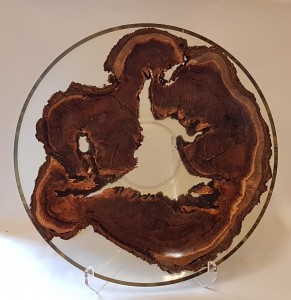Dear Artist,
From time to time many of us are called on to critique the work of others. In the classic formula, the “critter” stands beside a well-lit easel as the paintings of a roomful of “crittees” are brought forward one at a time. With each presentation the critter may remark on a virtue or two, pick out a fault or two, and hopefully point out a fix or two. The silence while the critter’s brain reboots at the beginning of each new presentation can be deafening. For those works not already deemed perfect by the crittee, the most common wish, as far as I can tell, is that only a few minor adjustments will be needed to make it so. At the end of a devastating crit, crittees may dig in, fight back, or try to explain. Others slump in their seats in disgruntlement or disgust. Crittees are not allowed to carry heat.
While occasionally valuable, group crits are a public broadcasting of what might be going on in a painter’s brain during a private act. The four main negative points are almost universal: Poor early planning, violation of basic rules, substandard drawing, composition or colour, a lot of faults suggesting abandonment. The last point is often a useful ploy — beginning again almost always beats repairing a failure. Well-considered abandonment is a trusted teacher.
Better artists develop a strong internal critic. While they may let themselves flow, their process includes being tough on themselves with regular full-brain revaluation of work-in-progress. As well as thinking ahead and foreseeing future problems, the process includes deadly vetting at the end. The golden rule: “Crit on your feet as you go.” In my experience, artists with highly developed self-critical faculties are often referred to as “talented.” Whether in a group or alone, even a simply composed, half-finished painting will have plenty of points, both positive and negative. I use a system of keywords. Keywords can include gradation, homeostasis, flats, symmetry, asymmetry, depth, pattern, cropping, edgemanship, regularity, repetition, counterpoint, etc. These keywords aren’t gospel, but they do help the crittee dig deeper rather than dig in.
Best regards,
Robert
PS: “If an artist has talent, he needs no other critic.” (Robert Brault)
Esoterica: Some critters are better than others. Critters need to offer practical ways to fix things on the same terms and in the style and media of the crittee. Theoretical and intellectual critiques can prematurely drive folks into nursing homes or chartered accountancy. Stick to points, don’t be afraid to recommend abandonment, and never forget Marcus Aurelius: “All is opinion.” Try to show your crittees how to crit for themselves — to their own standards. When developed relatively early in life, the art of self-criticism is key to professionalism. It’s really the fun part; it’s good for the mind at any age and heads off the natural rigidity that can set in during the golden years. Better than waiting for the Jello cart to come down the hall.
“Pictures deface walls more often than they decorate them.” (William Wordsworth)
This letter was originally published as “The points of crits” on July 16, 2013.
Have you considered a Premium Artist Listing? With each letter, an artist is featured at the bottom of this page. The Premium Artist Listings are a means of connecting artist subscribers through their work. Proceeds from each listing contribute to the production of The Painter’s Keys.
“I can live for two months on one good compliment.” (Mark Twain)
Featured Workshop
Featured Artist
My current exploration is the marriage of wood with epoxy. This results in stabilizing wood that otherwise has no value and creating pieces that in the past could never have been elevated to art. I am also using epoxy to elevate the wood in its new environment. Sometimes I use the tension between the wood and the epoxy to give the sense of something peaceful. The results are platters and bowls that allow the wood and me to express ourselves.










14 Comments
I love this. For my own artistic path looking back, I so often wonder where critiques are best to happen. In an art group setting where artists bring in a framed work they are happy with, only for it to be picked apart in front of an audience just seems so wrong on all levels. Ignorance plays a big part in these critical events as well. I recall the first time I ever participated in a “critique” in an art group I had only become a member of for a few months. It was an art group of amateur Sunday painters, mostly white haired retirees. I was totally unaware of what I had joined up with. I was young, pregnant in fact with our third child, just wanted to be part of something where I felt I was going forward with my art since full time art education was out of the question at that time. I recall the intense embarrassment of my artwork being put centre stage and pulled apart, especially the home made frame on it my husband made, told to never put that on anything the public might see again. I felt like I was going to go into labour it was so traumatic. What was the point of putting myself through that horror? Learning? Well, okay, in a workshop where we are there to learn, bring on the critical comments. But everywhere else, it’s harmful I think. I don’t know why artist accept the call to do them.
OMG, that was horrible! They broke the rules. I agree with Robert we have to be our own critic- I remember going to an artist’s retreat where nobody did the style of painting that I did, was there to bounce ideas off. So at night I would go back to my studio and put a spotlight on each painting that I was working on and just sit until I could figure out what was wrong or the next step and then make notes for the next morning. I learned a lot. Hope you are painting and enjoying it!
Bunches about the path of an artist can be learned in a relaxed critique group. Over time one can walk away with increased knowledge, exposure to different methods and new ways of thinking. It can be a lovely addition to the life of an artist.
For me, I start with what’s right, then move on to what I would do if it were mine. How to change it and why.
One key for e is to try to see what the painter is trying for then describe what I see first Then ask them if did that I say connect with them and their picture I often use a piece of cardboard or the back of another painting to Crop off a problem area to show how the weak area has an effect on the whole thing
I might suggest a couple of things that might make the rhythms move better in the trouble area
I paint for myself with genuine authenticity and stay the course of my own trajectory, no critters in my path.
found this really enlightening. Thank you!
I have always felt that encouragement is better than critiquing. A positive remark about something that is good about the work, and then perhaps a question about what is glaringly bothersome to the one doing the observing. Perhaps the artist wanted things like chaos, hardness, lost line, repetition, strange colors in their painting. If through questioning it was unintentional and they admit to a flaw of understanding what to do, then please help them through. No need to set an artist on fire! Painting is always a challenge and a learning experience. It is not something that we as artists can throw at someone and expect them to agree with us and follow our unique ability. Worse if it is a gang of “experts”, and the novice is baring their soul, (which we all have done at some point) and the anguish is palpable. Everyone is different. I allow my students to find their own growth as an artist, with a little encouragement. No need to push my ideas in any way. Join me to Maine, the posted workshop below in this Newsletter. I will encourage you to paint Plein air, and I will share my knowledge and techniques for doing it with you. It will be a great Adventure for Artists, painting the coast of Maine! Cheers!
We all see the work individually, based on our own experiences and knowledge. As Betsy Glass mentioned today we need to paint for ourselves. One person’s critique will be totally different from another’s viewpoint. Is there really a right, or a wrong way to go? There are better ways to advise an individual with their art. When I teach one on one help is preferred. Group critiques are not in my plan. Gone. Bye. Bye. Adios.
I paint it the way I want it. If you don’t like it, don’t look at it.
Twenty+ years ago, with three other women artists we formed a Critique group of 12 to 14 people. We still meet monthly, and keep the membership to 12 and still have 1/3 of the original members. We request people bring in paintings they are having “problems” with and would like suggestions, and they can also bring in a finished painting they simply want to “share”…and we don’t critique that. Everyone in the group may speak up and critique and we find it very useful.
We end the critique with lunch in a local restaurant, entirely optional… and sharing art information and conversation. We begin each critique with asking what the intention is, and then go to what works and then to the problem areas. We merely “suggest” ways to correct what doesn’ t work — but never presume to tell the artist how to complete the painting. It has proven inspiring to us, it gets the creative juices running…just seeing the other work….and it is a “safe” place for us to receive an honest opinion by people we respect. I might add…we are all far from being “beginners” and have painted for many years and most of us are “professional artists”. Beginners may not feel the same about critiques and may do better to seek critiques from a trusted teacher or mentor. The thing about not seeking critiques may mean you keep making the same “mistakes” again and again. Think of critiques as a “fresh eye” looking at your work and seeing something you may not have seen…..its not a judgment….or at least it shouldn’t be. Its a “tool”…..just like your palette knife, or big soft brush….its just another tool.
I am fortunate to paint on occasion with a group of about 8-12 others and out instructor. He is excellent in his manner of critique, rewarding positives, and suggesting ways to correct negatives. He also as in the preceding note ask one of
“students” to give their critiques.
I’m only teasing. We all need to get used to criticism one way or another. That’s how we learn anything. Then we can make up our own mind.and agree or disagree.
I’ve had the points Robert mentioned printed and stuck on my studio wall since the first time around. So helpful and succinct!
Bless you Robert
.